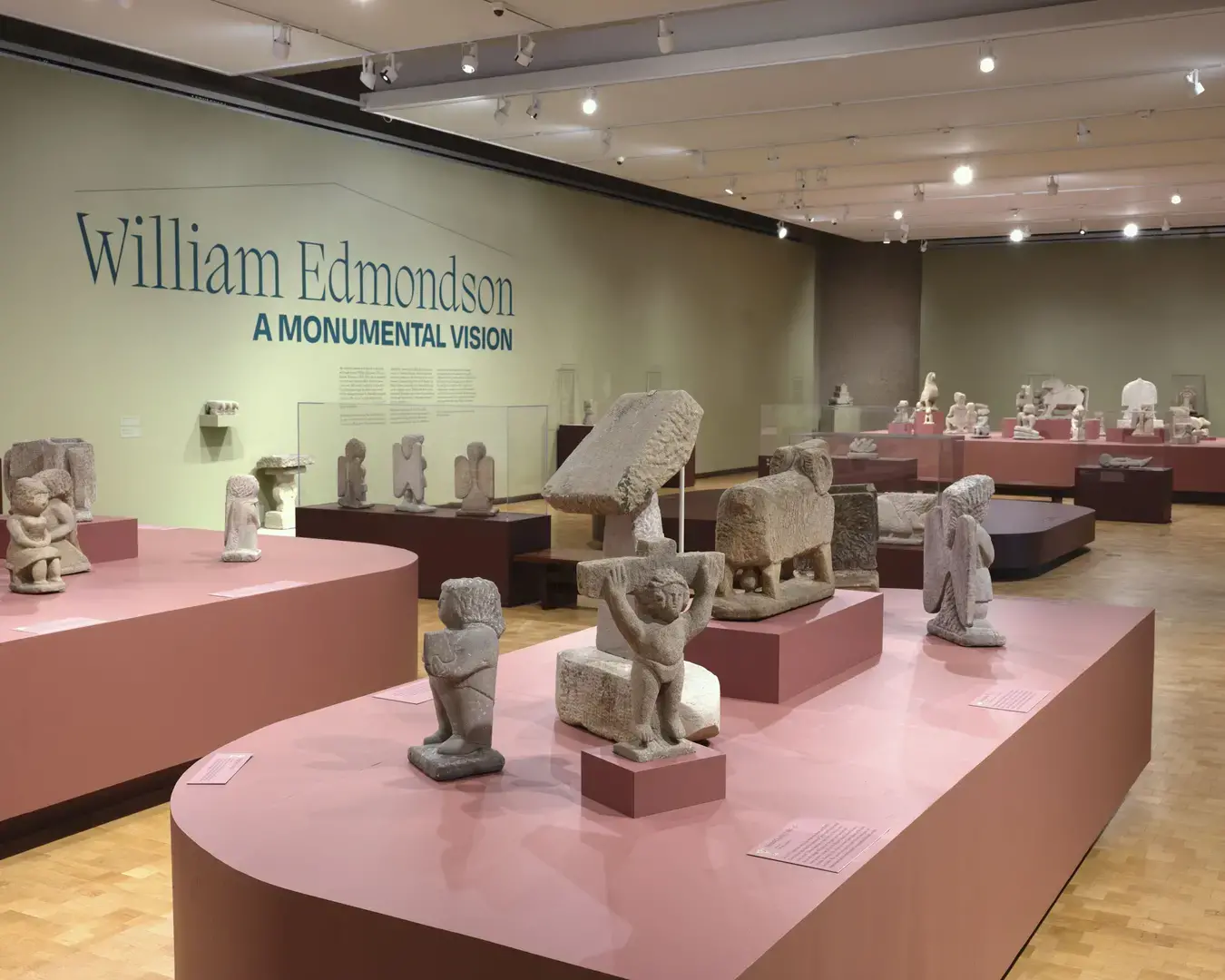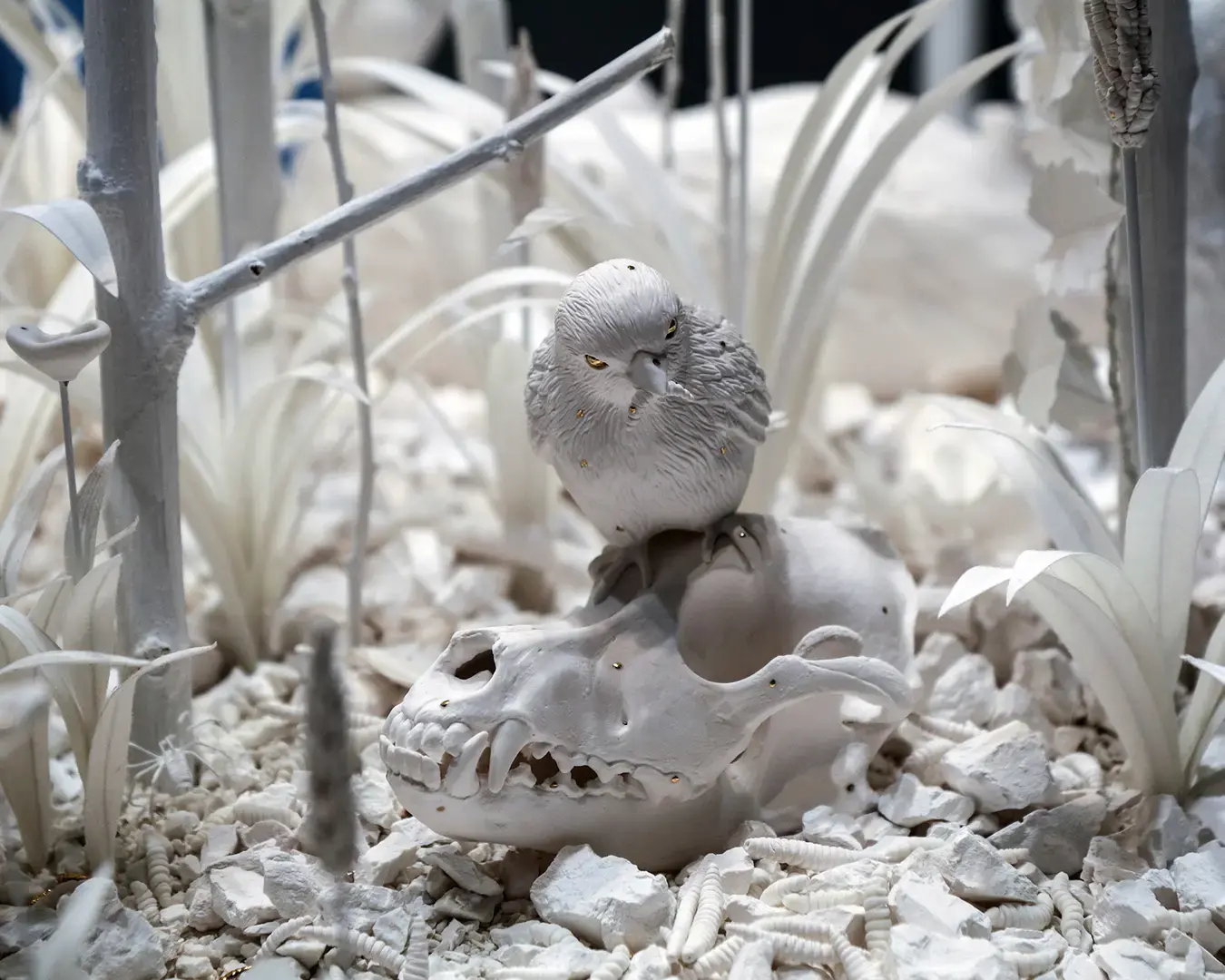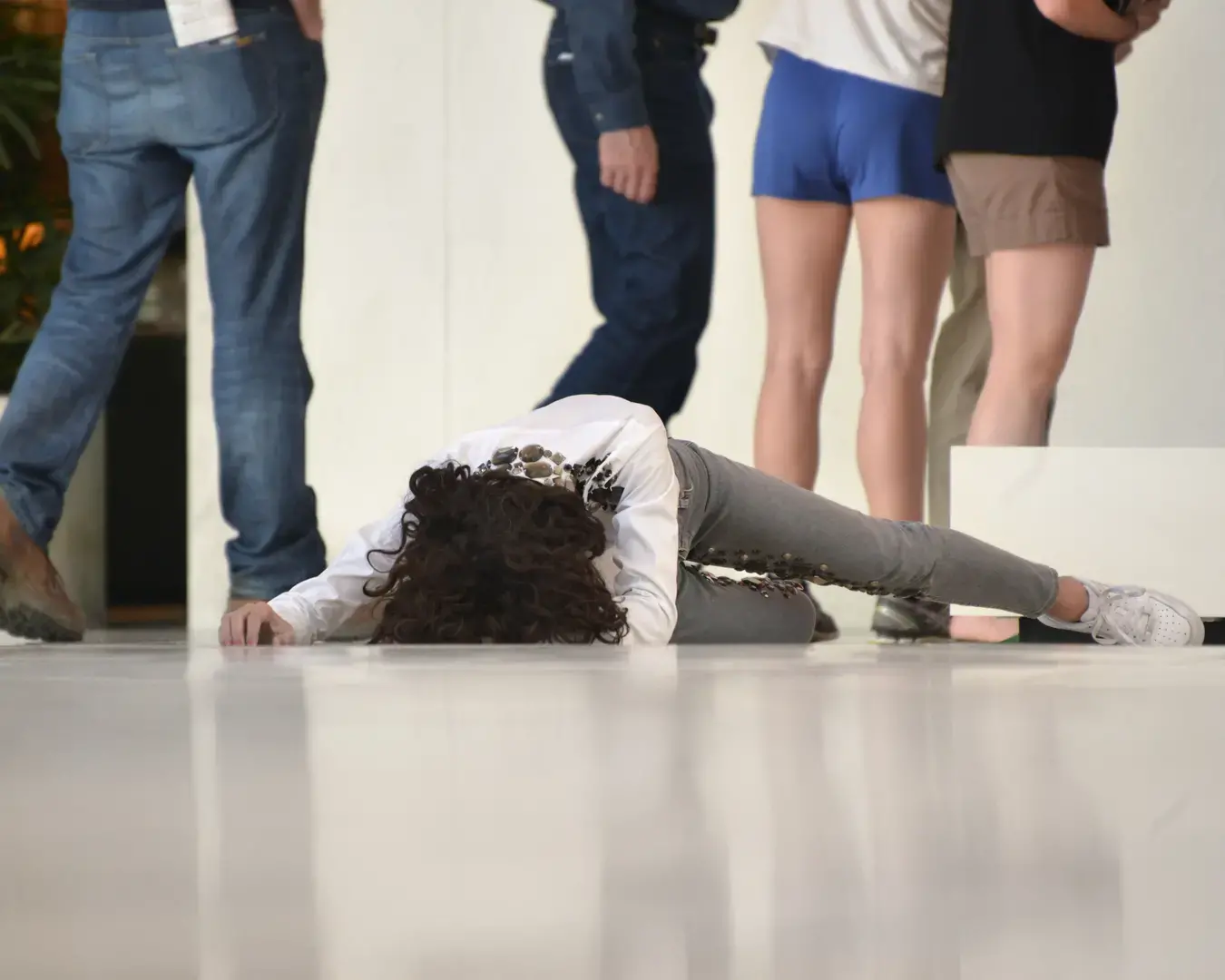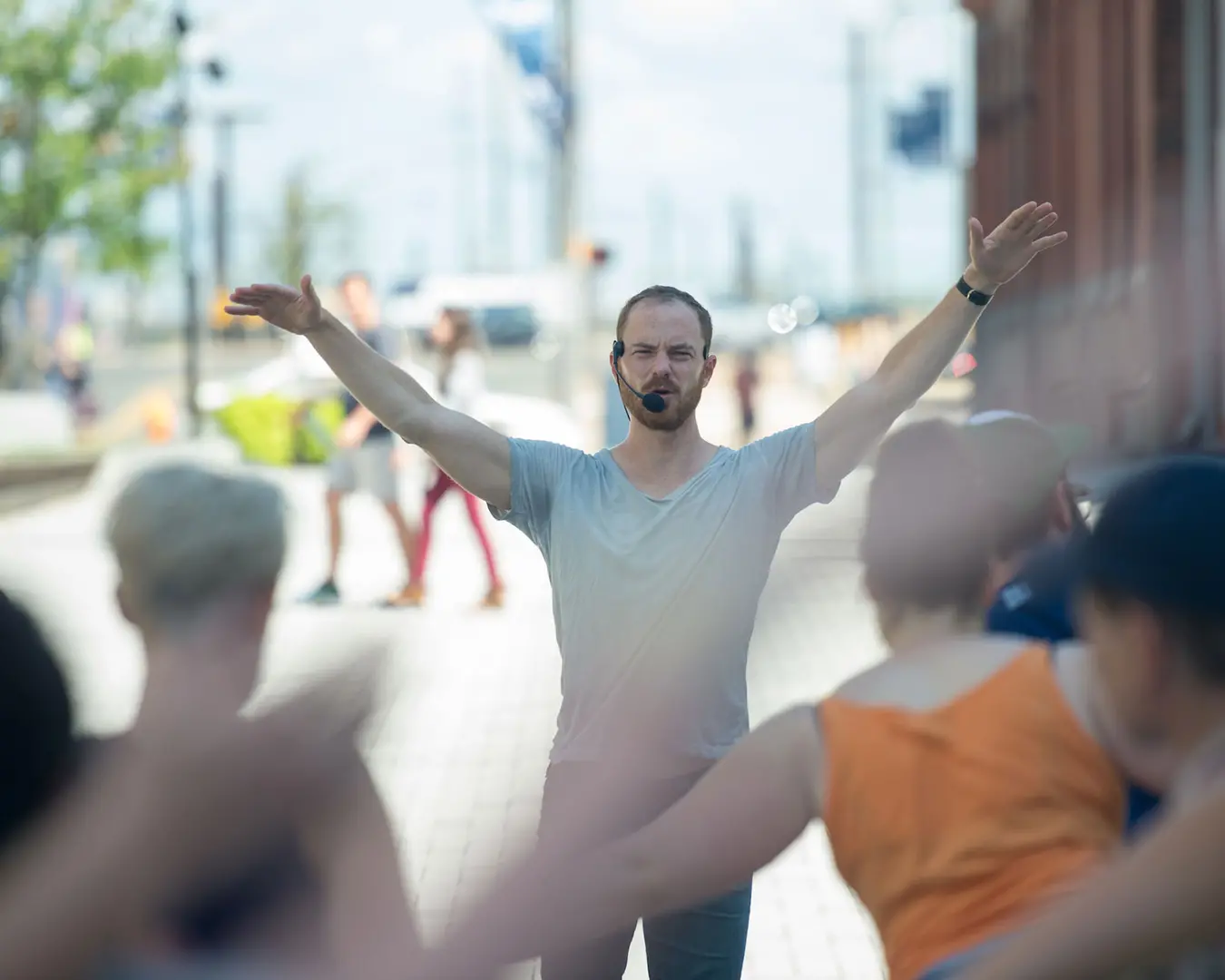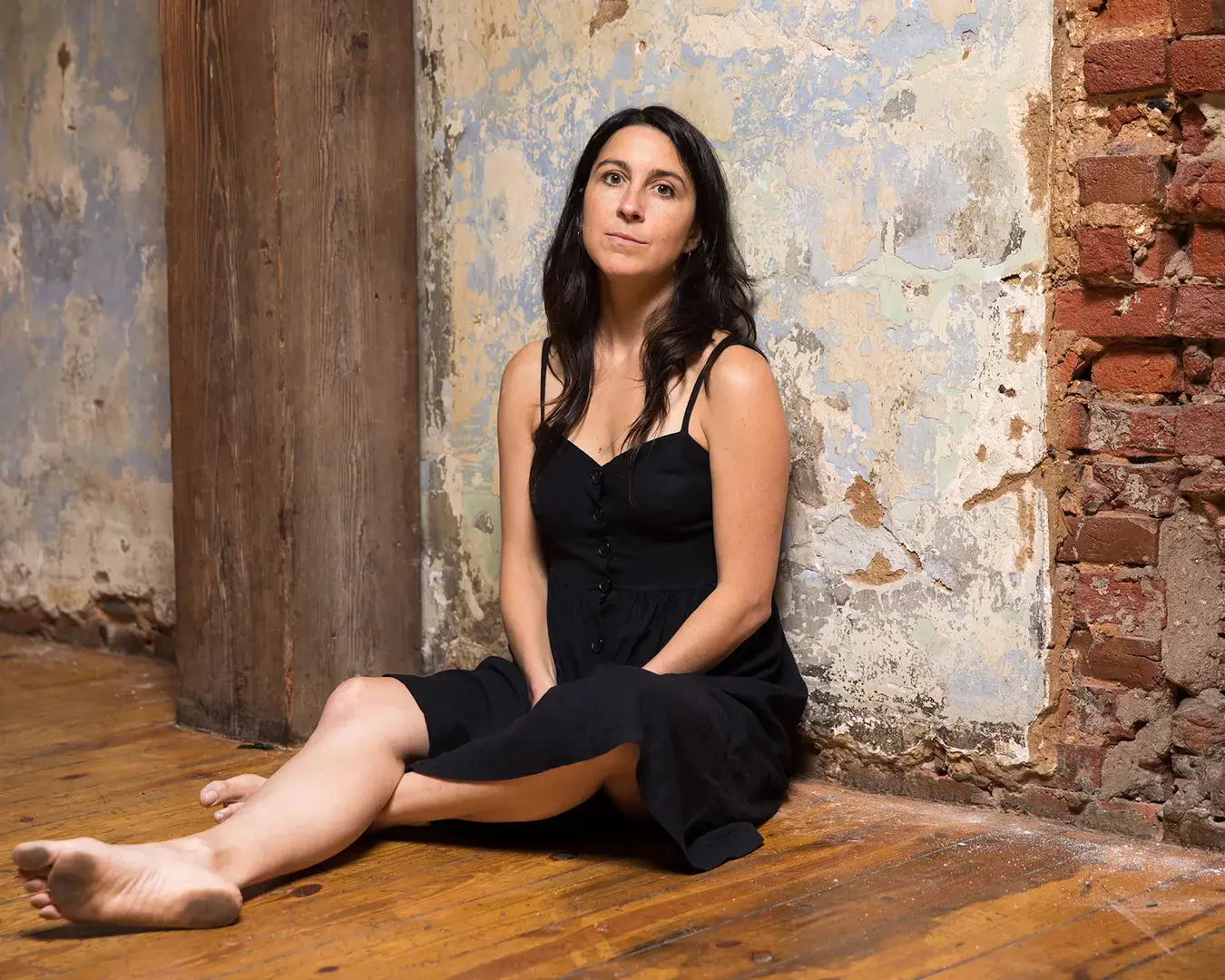Transcript permalink
It was important for us to not have performance pop up in the gallery and disappear and that perhaps there was a deeper level of engagement that we could offer you as an artist, the dancers that you have invited into the space, and even our audiences and our colleagues that we work alongside here at the Barnes. And so I'm wondering what that process of planning and design has meant for you, and what you have learned or even intended to influence throughout that process.
Yeah, no, I think for sure. And I think it goes back to this idea of being intersectional and also this idea of being collaborative, right? I think for me I didn't want to come in and make a performance and then leave. I wanted it to have a trace. So I really wanted to be an intervention and a dialogue.
And so thinking through that, I as an artist make performance. I'm a former dancer. But I also make sculpture, and I also make other forms of visual materials. And so for me, it was really important to think about, how do I leave something into the space that is also here? And so thinking also about the exhibition design, you're kind of creating a floor plan for your audience to participate in. And so for me the audience is also a dancer. They're also doing something in the space.
So when the performers who are trained are doing something very specific, the audience also is being given that acknowledgment that they're in the space. So they are dancing. So like these pathways create arteries for movement. And so for me that is also part of it. So I was really excited that we had that opportunity to talk to Yamu to work together to think like, Oh if people walk this way or-- what happens here?
Or even more logistical things like the carpet, the tapestry, the soft sculpture that I created, which becomes an altar or a stage for the dancers. It's on this pedestal, but even like the pedestal itself has a certain way of its height. So it dictates a certain sense of movement. Like you may not want to sit on it because it's too low. So also using museum choreography to create a space that is inclusive as well.
I think for me it's a different way of working. It's an exciting way of working for me, being able to work with a museum exhibition designer to have a sense of coloration of walls to think about the colors of the pedestals that will then also complement the carpet. And I think going back to Edmondson's yard and the garden, this becomes a sculpture garden.
As soon as my dancers walked in they're like, ''this feels like a garden.'' And I was so happy when I heard that I was like, yes. This was the intention. This was the intention. But it creates a playground as well. And so for me, there was something about that really trying to think of this as a playground.
So that when I give them tasks, so in my choreography, things are set. But there's also moments where I'm like, this is the task that has to be had. So they use this architecture, they use this design as a place to start to come up with their own prompts to make choices and decisions to make those movements.
Permalink
